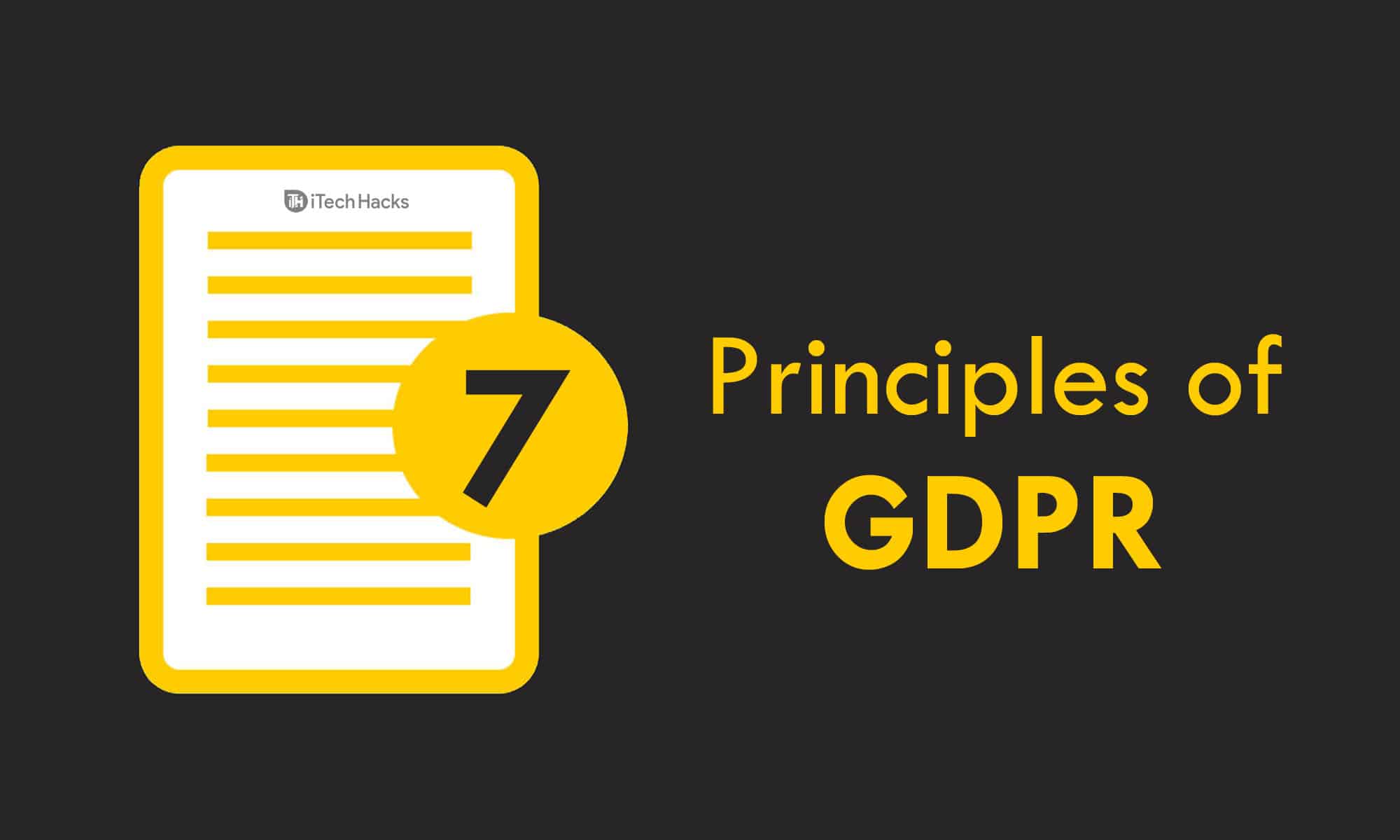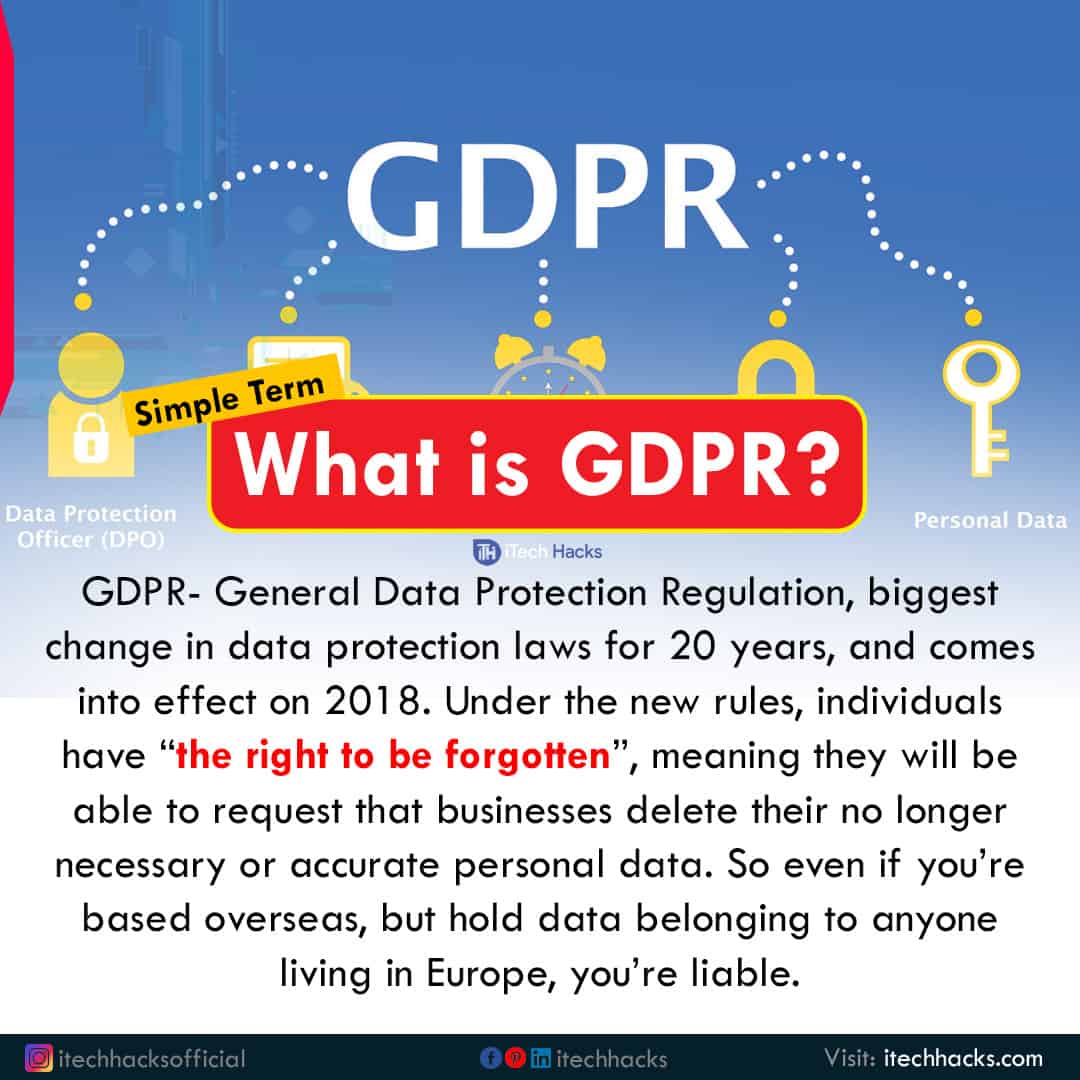What is GDPR?
The European Commission set out some of the plans for data protection across the EU i.e. European Union in order to make Europe ‘fit for the digital age’ and approximately four years later, the agreement reached on how it will be enforced and what will be involved in it.
1 What is GDPR?2 The personal data under the GDPR3 Who does GDPR apply?4 Requirements to be a GDPR compliant4.1 1. Obtaining Consent.4.2 2. Timely Breach Notification.4.3 3. Right to Data Access.4.4 4. Right to be Forgotten.5 7 Principles of GDPR5.1 Conclusion:
One of the reform’s key components is to introduce GDPR (General Data Protection Regulation). This new framework of the EU is applied to the organizations in all the member-states and has the implications for individuals and businesses across Europe and beyond also. The vice president of the Digital Single Market, Andrus Ansip said that the Digital Future of Europe can only be built on trust and continued that with solid common standards for data protection the people could be sure that they are in control of their personal information. Andrus Ansip said it when the reforms were agreed in December of 2019. If we move to the deep of GDPR then we will get to know that it is a new set of rules which is designed to give EU ( European Union ) citizens more control over their personal data, and it is aimed to simplify the regulatory, environment for any business. therefore, from the digital economy both the businesses and citizens in the EU can fully be benefitted. READ MORE: Difference Between Invoice and Quote?
The personal data under the GDPR
Now you must be thinking that what are the personal data which can be stored in General Data Protection Regulation (GDPR) are, then in this section we will mention this. The types of data which are really considered as personal under the existing legislation which includes photos, address, and names and obviously it will include the personal data which is sensitive such as biometric data and genetic data through which it could be processed to identify an individual.
Who does GDPR apply?
GDPR ( General Data Protection Regulation ) is applied to any organization which is operating within the European Union (EU) moreover, It doesn’t restrict itself the organizations which are operating under EU only but it also to the organizations outside of the EU which offers goods and services to the businesses or customers in the European Union, this ultimately means that the almost every major corporation in the world needs GDPR compliance strategy. Two different types of data handlers are there in the legislation which applies to the Controllers and processors and the definition of each are laid out in Article four of General Data Protection Regulation.
Requirements to be a GDPR compliant
The world’s biggest companies are grappling with GDPR compliance currently and will likely grapple with up onto the deadline of May 25th, 2018, and even beyond maybe. Let’s distill GDPR compliance very down to the basics still there are very much to implement to make it sure you are inline and what you must be thinking about is: Obtaining consent, timely breach notification, right to data access, right to be forgotten, data probability, privacy by design and potential data protection and we are going to discuss some of these:
1. Obtaining Consent.
your consent terms must be clear and the consents must be given as well as freely withdrawn at any time.
2. Timely Breach Notification.
The customers and any data controllers both have to report the data breach within 72 hours if any security breach occurs if the company is large enough of requiring a GDPR data controller and if it fails to report breaches within these timeframes then it will lead to fines.
3. Right to Data Access.
If the users are requesting their existing data profiles then the company must be able to serve the users with a fully described and detailed and free electronics copies of data you have collected about the users, and remember that this report must include the various ways the company is using the user’s information.
4. Right to be Forgotten.
It is also called the right to data deletion. If the original purpose or use of the company is completed then the customers have the full right to request the company to totaly delete the data.
7 Principles of GDPR
READ MORE: SS7 Hack Attack: How it Works? Detailed Explanation
Conclusion:
So, these are some of the simple definition requested by itechhacks readers on GDPR and 7 Principles of GDPR. We hope this article was helpful to you. As technology is getting more and more advanced these days. We are experiencing its presence in the education system too. Online learning is beneficial for each and every kid living in this era. Thanks for reading! Do share our articles with your friends and family. Cheers!
Δ


